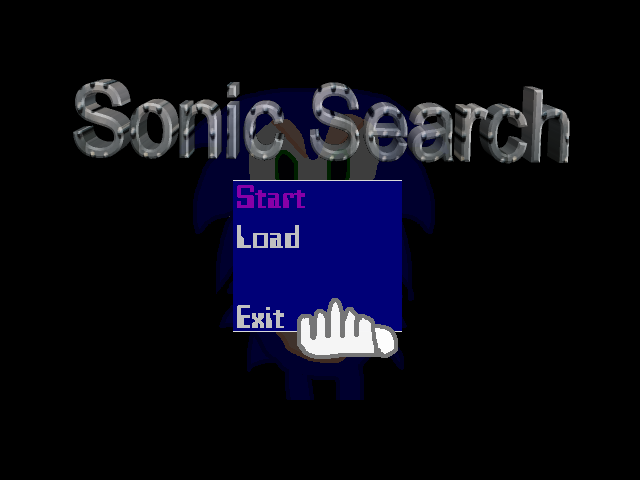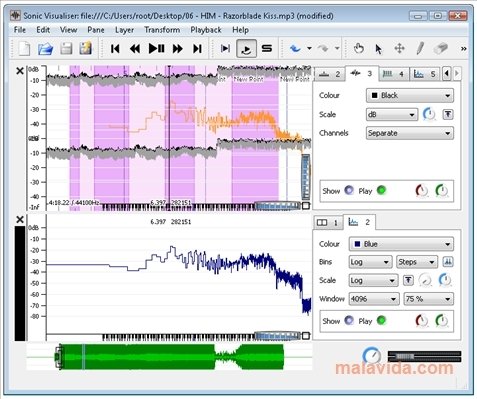
- #SONIC VISUALISER CANNOT SEE WORDS ON BOTTOM HOW TO#
- #SONIC VISUALISER CANNOT SEE WORDS ON BOTTOM INSTALL#
- #SONIC VISUALISER CANNOT SEE WORDS ON BOTTOM MANUAL#
To the display, with various kinds of data in them: There are then three menus dedicated to adding new panes and layers Waveform layers to that pane, displaying the Import an audio file, it adds time ruler and Sonic Visualiser starts with a single visible pane. Itself, layers corresponding directly to audio data (such as waveformĪnd spectrogram layers) are not. Of the annotation layer types are interactively editable on the pane Any menu operation in Sonic Visualiser that works on a single layer The front layer on that pane is theĪctive layer. One pane is always the "active" pane, and this one is marked with aīlack vertical bar to its left. Not have to have identical scales on the y axis – although Sonic Visualiser willĪttempt to align them by default if their scale units match. Magnification and alignment on the x (time) axis. Layers that are stacked on the same pane will always share the same They can represent: instants, curves (time-value plots), and soĪ pane with four layers: waveform in black, time ruler in grey, time values in purple and time instants in blue. Several different kinds of layer, which differ in the types of data So for example, you may have a spectrogram layer "at theīack", with measurements, onset positions and notes displayed in To the same sample frame at their centre points.Įach pane can then display any number of layers, which areĬonceptually stacked on top of one another like layers in a graphicsĪpplication. In audio sample frames, and all of the stacked panes will be aligned The horizontal axis of each pane corresponds to time You can stack as many panes above one another vertically as will fit Or a subdivision of the horizontal axis into differently coloured segments. Shown on a pane, such as a waveform, a line graph of measurements, Like a drawing canvas a layer is one of a set of things that can be A pane is a horizontally scrollable area of window

Sonic Visualiser's user interface is structured around panesĪnd layers. Please report errors and omissions using the Sonic Visualiser bugġ. Terms of the Creative Commons Attribution-ShareAlike 2.5 License. You may modify and redistribute it under the

This document is Copyright 2006-2007 Chris Cannam and Queen Mary,
#SONIC VISUALISER CANNOT SEE WORDS ON BOTTOM MANUAL#
This manual describes Sonic Visualiser version 1.0.
#SONIC VISUALISER CANNOT SEE WORDS ON BOTTOM HOW TO#
This is a brief reference manualĮxplaining the concepts used in Sonic Visualiser and how to use it. Sonic Visualiser's "Tempo and beat tracker" plugin also has a "Tempo" estimation function, but in my brief testing, its results were not anywhere near as good as the "Beats" estimation, but you can certainly have the plugin run both estimations separately and just export whichever one you think is more correct, just make sure the tab for the one you want to export is active before you go to export the annotation layer.Sonic Visualiser is an application for viewing and analysing theĬontents of music audio files. The project's tempo map will be updated to reflect the information in the file, but if the results aren't to your liking, you can undo the changes and trying other settings in Sonic Visualiser's beat estimation. Then in EOF, while your project is open, use "File>Sonic Visualiser Import" and select the file you just exported from that program. To do so, make sure that layer is still in the foreground (it is the selected layer tab on the side of the program) and use "File>Export annotation layer" and choose a place to save the file (your project folder would be a good place).

If you are satisfied with the results, you can export the beat positions to a file that EOF can import. You can even change the plot type to segmentation to get a better view of the detected beat positions. You should see lines plotted over the waveform that represent each beat of the song and a new layer tab will open on the side where you can change the line color. You can adjust the plugin parameters in the window that pops up if you want to experiment, otherwise just click OK and wait a minute. Once it finishes, open the Transform menu, select "Analysis by category>Time>Tempo>Tempo and beat tracker: Beats". guitar.ogg) and you should see it begin to draw a waveform graph of the audio. Once installed, open Sonic Visualiser and have it open your chart audio (ie.
#SONIC VISUALISER CANNOT SEE WORDS ON BOTTOM INSTALL#
To use this feature, download Sonic Visualiser ( ) and the Queen Mary plugin set ( ) and install both of them. This feature would probably work best when you are first creating a chart instead of after you have authored your notes, but it's up to you if you want to use it after.

EOF manual wrote:Sonic Visualiser Sonic Visualiser is an audio analysis program that supports a large selection of plugins to process sound and while the beat estimation generally isn't as accurate as painstakingly syncing beats manually, the results are very impressive for an automated process.


 0 kommentar(er)
0 kommentar(er)
